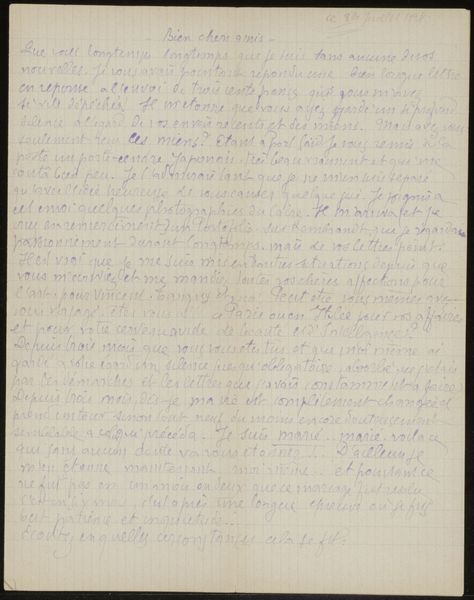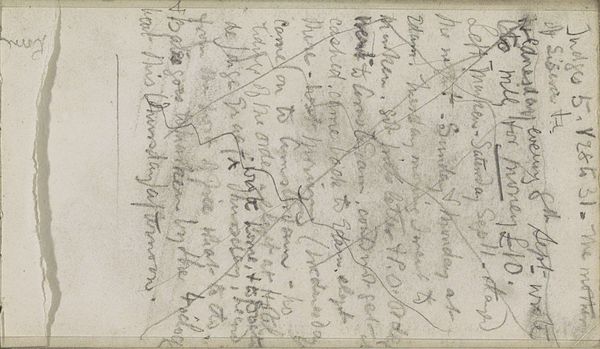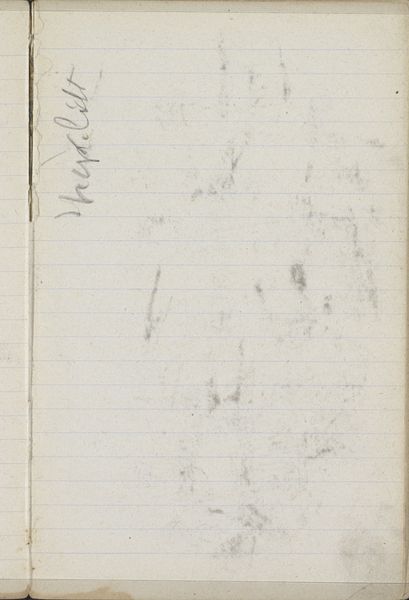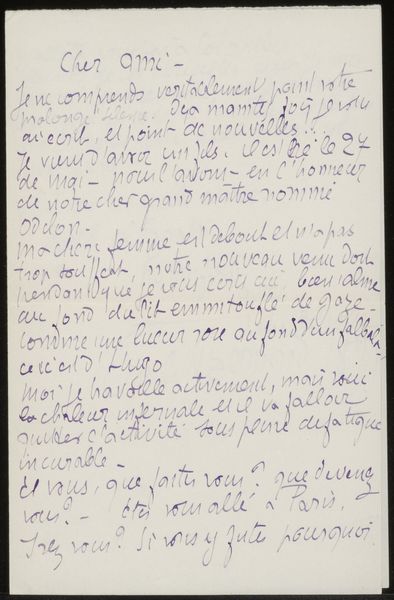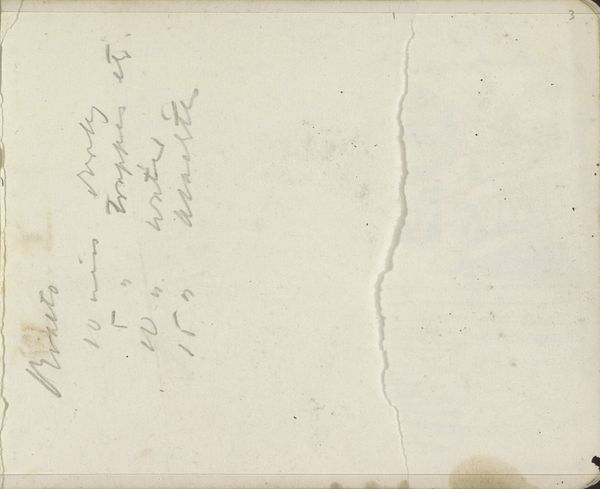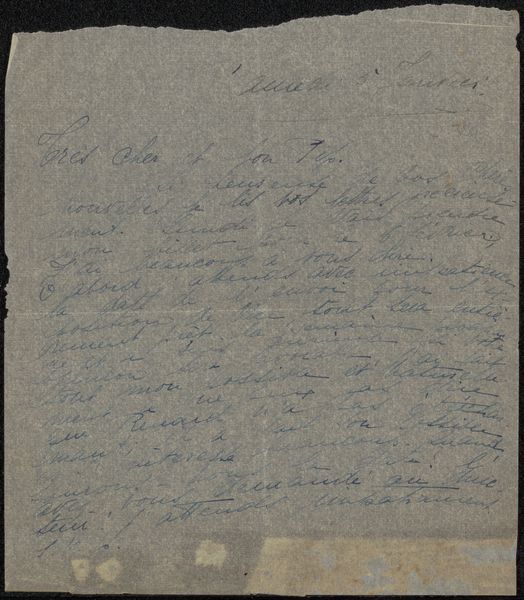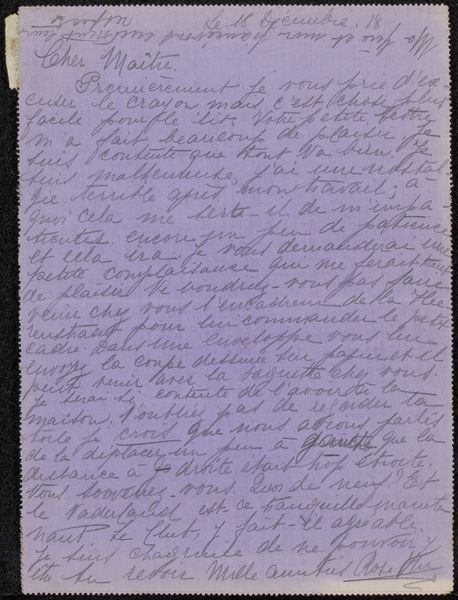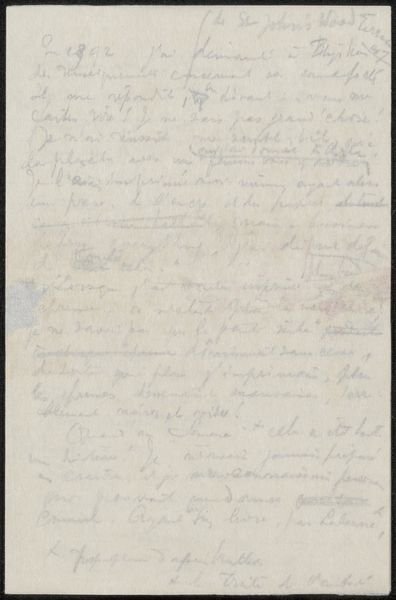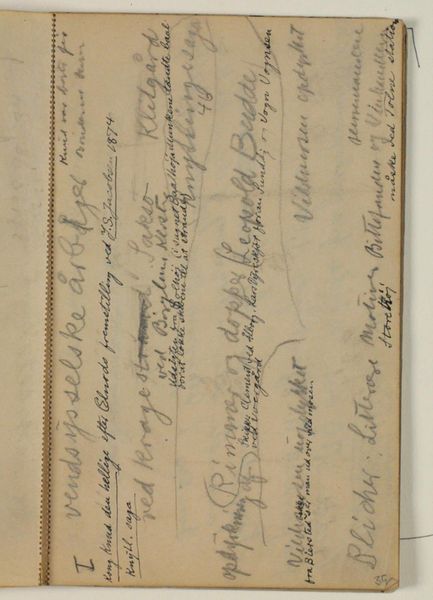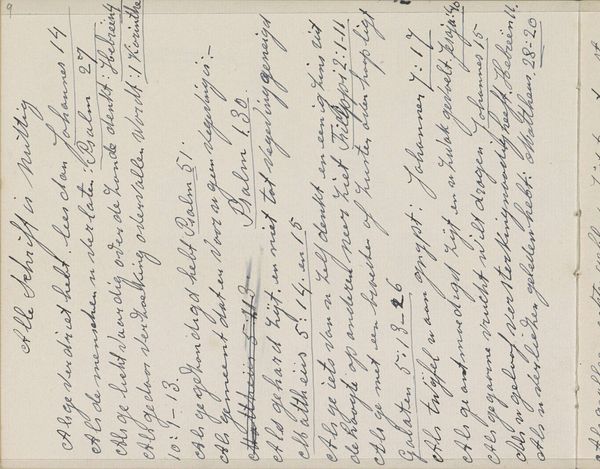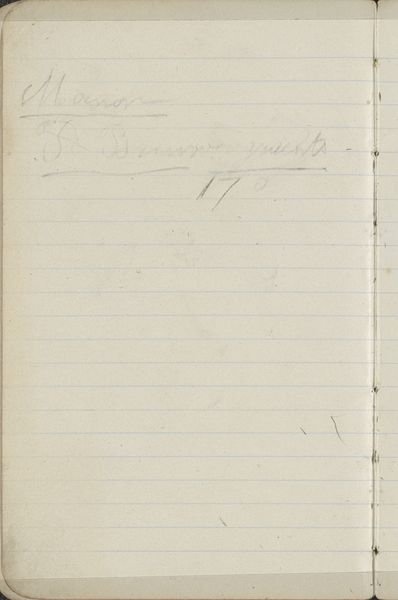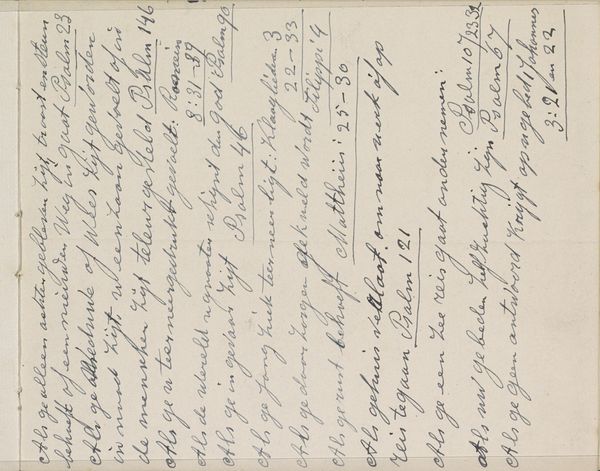
drawing, paper, ink
#
portrait
#
drawing
#
paper
#
ink
Copyright: Rijks Museum: Open Domain
Curator: Let’s spend some time contemplating this remarkable piece, "Brief aan Henriette Wilhelmina van Baak," attributed to Hélène André, created sometime between 1906 and 1930. It’s executed with ink on paper. Editor: Initially, it just strikes me as overwhelmingly textural. The lines of script become these striated layers, almost obscuring the supposed content. It reads, visually, like a kind of deliberate palimpsest. Curator: Absolutely. When looking at the writing's labor itself, this wasn't merely communication but a considered artifact produced for its own sake. Notice the subtle changes in pressure of the ink and that the weight of the line produces variations within a constrained format; also, note the historical labor in acquiring and processing the raw materials of the paper and ink itself. This piece asks us to examine the entire infrastructure behind such material creation and its production. Editor: I am very interested in the abstraction offered here. Because we can't actually decipher the content, we're pushed toward a formal appreciation of the script's shape, rhythm, and density against the page's emptiness. This piece shows how handwriting becomes an expressive mark rather than only a semantic signal. Curator: That’s insightful. Further contextualizing it by asking, what conditions produced this form of correspondence during this time? The labor inherent in this piece speaks to broader historical contexts that illuminate how materials intersect social realms through complex networks. Editor: To build upon that: consider how the physical gesture and composition themselves—the balance between text, line breaks, and spatial arrangement—produce visual harmonies that mirror the potential emotional dynamics within the letter itself. Curator: Indeed! These intimate forms show a range of artistic agency even while appearing simple in both function and form. By unpacking materials of what we find valuable in everyday use while integrating formalist analyses we deepen engagement regarding class relations to how items obtain value from different contexts which leads one toward understanding art across diverse dimensions. Editor: Ultimately, seeing how seemingly everyday paper becomes a visual object transcends pure functionality allows insight through its forms that highlight unseen meanings while promoting deeper levels towards engaging these subtleties.
Comments
No comments
Be the first to comment and join the conversation on the ultimate creative platform.

